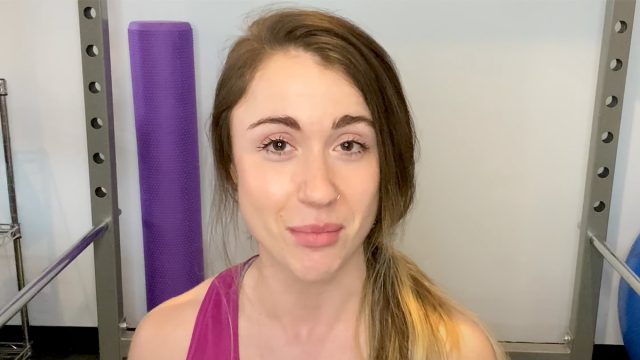She Walked 15K Steps for a Year and Discovered Something Unexpected About Food Freedom
Most fitness advice tells you to eat less and move more. But what if you could stay lean while eating more? Laura Grossi, a CanFit Pro Certified personal trainer, discovered that walking 15,000 steps daily allowed her to maintain her physique while eating an impressive 2,100 calories per day. The 27-year-old Ontario-based coach, who helps her 160,000 Instagram followers build muscle and lose fat, has turned this simple strategy into a sustainable lifestyle. Here's exactly how she does it—and how you can, too.
The Real Reason 15K Steps Works
"I've walked an average of 15 K steps every day for the past year," Laura explains in her post. "The big reason that I do it is the mental benefits," she adds. Beyond just burning calories, she finds walking helps manage ADHD, anxiety, and depression. "It releases chemicals and endorphins and reduces stress," she notes, adding that it significantly improves her focus throughout the day. This mental clarity bonus makes it easier to stick to other healthy habits, creating a positive cycle of wellness.
How Many Calories Can You Really Eat?
The walking strategy has allowed Laura to maintain her physique on surprisingly high calories. "I was able to lose fat fairly easily on an average of 2000 calories," she shares. But she emphasizes balance is key: "It does allow me to eat a little more, but that is within reason. That does not mean that suddenly my nutrition is a free for all." This approach has given her more flexibility, especially on weekends. "It is enough to allow me to eat higher calories on the weekend and not have it set me back," she explains.
The Role of Strength Training
Laura emphasizes that her success isn't just from walking alone. "Keep in mind the fact I've been weight training consistently for a long time and have a higher muscle mass. That really does help with the burning calorie thing," she explains. Her current routine includes weight training four times a week, typically for less than an hour per session, combined with her daily steps goal.
Will Walking Alone Get You Toned?
"If you want to have toned legs, that means you want to have muscle built up and a low enough body fat to see the muscle that you've built," Laura explains. While walking helps create the caloric deficit needed for fat loss, she stresses that "just walking alone isn't enough to get you toned." The key is combining it with proper weight training and nutrition. "If you're completely sedentary to begin with, then initially it would help you, but eventually that's not going to do it only when paired with the proper weights and the proper eating."
Avoiding Muscle Loss While Walking
A common concern Laura addresses is whether high step counts can lead to muscle loss. "No, as long as you're eating enough and allowing yourself to recover properly from your workouts," she assures. However, she cautions, "If you're working out five, six days a week for a couple hours and getting 15k plus steps and not eating enough and undereating on protein, then yeah, you might lose muscle."
Making Steps Part of Your Daily Routine
Laura recommends breaking down the steps throughout the day rather than doing them all at once. "You can still get a high step count if you want to break it down into a few power walks a day," she advises. She suggests taking three 20-minute walks throughout the day, which can add up to several thousand steps. For those with desk jobs, she suggests getting creative: "If I'm sitting outside and working, rather than going to the close bathroom, I go all the way down to my basement."
Alternative Ways to Get Your Steps
"Yes, you can get your steps through other activities, not just walking," Laura explains. She suggests using various forms of cardio to reach your step goals: "Let's say you go on 20 minutes on an elliptical. That's going to get your steps up fairly quickly if you can't do longer walks throughout the day." The key is finding what works for your schedule and lifestyle.
Building the Walking Habit
Laura uses her emotional awareness to build consistent walking habits. "Basically, if I'm feeling stressed or anxious, which is going to happen most days at some point, my habit now is to go walk," she shares. "That's the best way to build a habit is a habit, kind of attached to something that happens every day." She also suggests making it fun by participating in step challenges with friends using fitness trackers or apps.
Starting Your Step Journey
"You definitely don't have to just follow an arbitrary number or force yourself to do a really high amount if you're not used to it," Laura cautions. She recommends starting with a baseline measurement using your phone or fitness tracker, then gradually increasing your daily steps. "I know if you're not used to it, you'll feel sore doing 15K. If you're currently doing just a few thousand, definitely work your way up."
Making It Sustainable
The beauty of Laura's approach is its flexibility. "I personally don't have any formally planned cardio sessions. I just have my step goal," she explains. Some days she walks slowly while working, other days she might feel more energetic and do some brisk walking or cardio. "That's the good thing about step count. You can kind of base it off how you feel." The goal is to make it sustainable and enjoyable rather than another dreaded task on your fitness journey. And if you enjoyed this article, don't miss 12-3-30 Walking Method: 20 Proven Tips to Lose Weight Faster.





